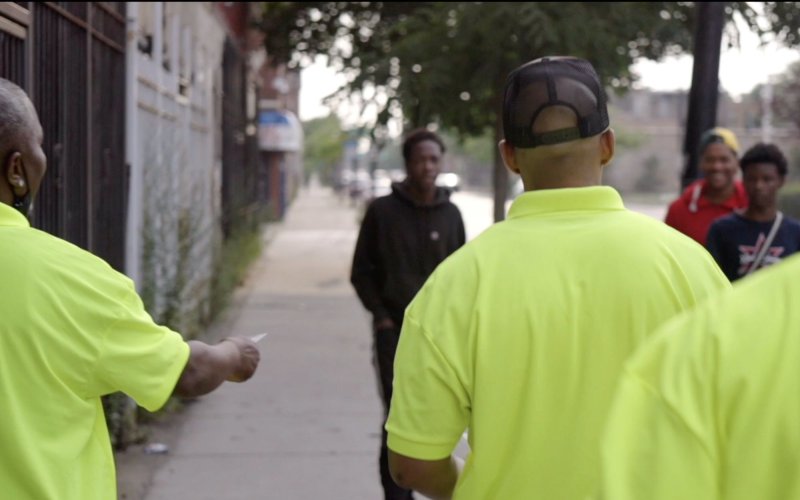Landmark Study Reveals Extreme Levels of Exposure to Violence for Street Outreach Workers

ALBANY, N.Y. — A landmark study of working conditions for community violence intervention workers in Chicago found that more than 60 percent have witnessed a shooting attempt and 20 percent have been shot at themselves while at work.
The study, led by Assistant Professor David Hureau of the School of Criminal Justice (SCJ) and Andrew Papachristos of Northwestern University, is the first to provide a comprehensive look at the lives and working conditions of these essential workers who play a pivotal role in violence prevention.
Hureau and Papachristos are holding a virtual press conference today at 11 a.m. to discuss the Violence Intervention Worker Study (VIeWS). You can attend by registering via Zoom.
Community violence intervention (CVI) workers are trained, street outreach professionals who connect with members of the community to prevent and diffuse violent situations and respond to violence when it happens. For the study, the research team surveyed nearly the entire street outreach workforce in Chicago, reaching 181 individuals from 15 organizations — a 93 percent response rate. Results found that 80 percent of these workers arrived at a scene of violence before such traditional first responders as police and emergency medical technicians.
And, unlike traditional first responders, CVI workers not only respond to acute violence, but maintain a presence in its aftermath, helping affected parties cope and managing the threat of retaliation and additional violence.
With gun-related homicides in the U.S. at the highest level in 25 years, CVI programs are being widely discussed at the federal and local levels as a key strategy for curbing gun violence.
“For many good reasons, this is a moment when policymakers are making significant investments in street outreach,” said Hureau, who is also executive director of the SCJ's Hindelang Criminal Justice Research Center. “Our results suggest that a meaningful portion of this investment should be dedicated to supporting the safety, health and well-being of the people who perform this important community work — not just scaling up the practice as it currently exists.”
This summer the study will be extended to Albany and other New York communities. In partnership with the New York State Youth Justice Institute (YJI), based at UAlbany, Hureau will lead the roll out of VIeWS surveys in 12 state-supported SNUG Street Outreach programs.
SNUG provides violence intervention, hospital response, case management and social work services to communities with high rates of gun violence, with programs in Albany, the Bronx, Buffalo, Hempstead, Mt. Vernon, Newburgh, Poughkeepsie, Rochester, Syracuse, Troy, Wyandanch and Yonkers. SNUG is funded by the state Division of Criminal Justice Services (DCJS) and state Office of Victim Services.
The New York project is being partially funded by a grant from the DCJS Research Consortium, with additional support from the YJI. DCJS and the YJI will use the survey results to better understand the experiences of street outreach workers and support their work.
The Chicago study was co-designed and facilitated with longtime violence interventionists and CVI leaders Jalon Arthur, director of strategic initiatives at Chicago CRED, and Christopher Patterson, assistant secretary of the Illinois Department of Human Services Office of Firearm Violence Prevention.
Among the findings:
- The average violence interventionist is a Black or Latino male in his early 40s, with a high school diploma or GED
- More than 80 percent work full time in violence intervention
- Workers regularly confront scenes of gun violence, injury and death
- Nearly 12 percent were personally shot at in the past year during the course of their professional duties
"Understanding and supporting this vital workforce is essential in building community-based responses to violence. Outreach staff are, literally, putting their own lives on the line without any of the resources to cope and manage the exposure to violence and stress we are seeing in this study,” said Papachristos, a professor of sociology at Northwestern’s Weinberg College of the Arts and Sciences, a faculty fellow with the university’s Institute for Policy Research and faculty director of the Northwestern Neighborhood & Network Initiative (N3), which coordinated research for the study.
Follow-up surveys of Chicago’s street outreach workers are planned for 2022. UAlbany’s Theodore Wilson, an assistant professor in SCJ, and PhD student Hilary Jackl were also involved in the Chicago research, which was partially supported by a grant form Everytown for Gun Safety Support Fund.
Hureau is the lead author of two papers stemming from the project, focusing on exposure to violence and traumatic stress among CVI workers, which are under review at leading scientific journals. You can view a working paper or read a summary of the VIeWS study online.




